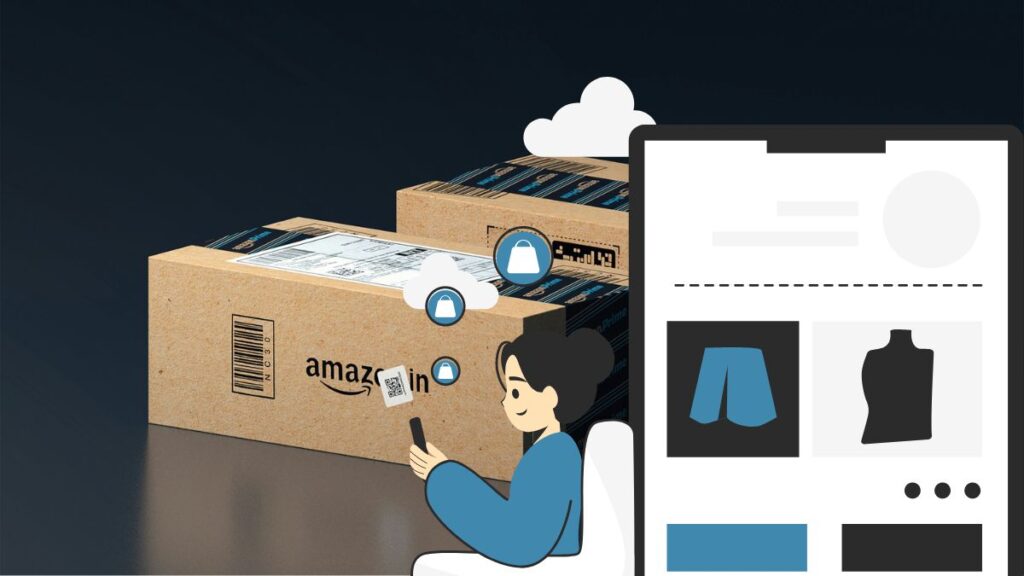According to reports, Amazon wants to focus on cheaper fashion and lifestyle products, as Meesho does. It wants to attract value-conscious customers with its new project, Amazon Bazaar. It will go up against Meesho, Flipkart’s Shopsy, and Reliance Industries’ Ajio Street in the Indian market. It will compete with Shein, Temu, and Pinduoduo in its own market.
Amazon is starting a new section with cheap, unbranded fashion and lifestyle items. They want to attract Indian customers who like good deals, especially since fewer people are buying regular products and Amazon’s growth is slowing down.
Amazon Bazaar Onboards Sellers for Unbranded Products
Amazon Bazaar has initiated the onboarding process for sellers, urging them to list unbranded products such as apparel, watches, shoes, jewellery, and luggage priced below Rs 600. ET has reviewed the company’s communication with merchants.
SoftBank-backed Meesho has successfully tapped into this segment, while Walmart-owned Flipkart’s Shopsy, operating through a separate app, is another major player in the space. Mukesh Ambani-led Reliance Industries is also actively developing its low-price platform, Ajio Street.
The document from Amazon stated,
“Amazon informs sellers that Bazaar, its new store, offers a platform to sell fashion and lifestyle products online without incurring extra charges, thereby enhancing profitability for businesses,”
Amazon Bazaar Delivery Times
People aware of the plan indicate that the delivery timelines for Amazon Bazaar products will probably range between two to three days, diverging from its usual fast delivery proposition offered to Prime members.
One of the sources stated,
“Consumer cohorts at the lower end of the market typically do not prioritize faster deliveries…They (Amazon India) have lost out on the segment so far and essentially want to tap the typical Meesho customer,”
As of press time on Tuesday, an email sent to Amazon India did not receive a response.
Amazon Bazaar’s Zero Referral Fee Proposal
Amazon proposes a zero referral fee to merchants, a crucial factor for products with low average selling prices (ASP). Meesho maintains an ASP of Rs 300-350 and operates on a zero-commission model while generating revenue from advertising and providing logistics services to sellers.
Unlike e-commerce giants Amazon and Flipkart, Meesho does not own or operate warehouses and logistics services.
Satish Meena, an independent e-commerce analyst and advisor at Datum Intelligence, stated,
“Meesho has captured market share from Amazon in certain segments such as fashion, homecare, and others. For Amazon to attract these users in low ASP segments, they would need to offer a similar product to merchants and consumers. Amazon Fashion is not like Myntra… They never got it right in India, and this would be another attempt.”
The analyst thinks existing marketplaces can’t keep charging high commissions for homecare and other less popular categories. They feel that “for Amazon to keep growing in India, it needs new users.” Merchants using its Easy Ship service to sell on Amazon Bazaar also benefit from no closing fee.
Amazon Growth and Challenges
According to a January report from research firm Bernstein, Amazon India experienced only 13% user growth in December 2023, primarily due to offering more premium options than its peers. During the same period, Flipkart and Meesho acquired 21% and 32% more users, respectively.
In 2022, Amazon acquired Glowroad, a women-focused social commerce startup that emphasises resellers. Just like other online stores, the big e-commerce company has been trying out and expanding its live shopping section in India to get customers more involved.
A senior executive at one of the top brand aggregators mentioned,
“Amazon India’s growth has visibly slowed down… The industry has been sluggish, but it is more pronounced for them than others… New offerings are part of a plan to revive growth.”
In its home market, the US, Amazon faces intense competition from Chinese online retailers Shein and Temu (owned by Pinduoduo) in the low-priced clothing and home goods segments. The retail giant is rethinking its strategies because these players threaten its position in the market, especially with inflation concerns in the country.
Amazon Pursuit of Faster Delivery Options
Amazon is currently engaged in early-stage discussions with brands and sellers to potentially offer delivery of certain products within a few hours, particularly in response to increasing pressure from quick commerce platforms.
One person quoted above mentioned,
“Talks on hyperlocal are still at an early stage and may take some time. Segments like homecare and non-grocery daily items are seeing consumers moving to the likes of Blinkit, Zepto, or Instamart. The idea is to see if they can deliver some of these products faster.”
Flipkart recently announced its plans to operate same-day delivery in 20 cities. After a gap of more than a year, Amazon infused Rs 830 crore into its India marketplace entity earlier this month. Also, it put Rs 350 crore into Amazon Pay, its payment business, making the total almost Rs 1,200 crore.
Also Read: Zee Accounts Missing $241 Mn, Sebi Asks Subhash Chandra and Punit Goenka to Explain
Tata Group’s Market Cap Hits Rs 30 Lakh Crore, Surpassing Pakistan Economy
Renault India Teams Up with BLS E-Services to Boost Rural Sales

